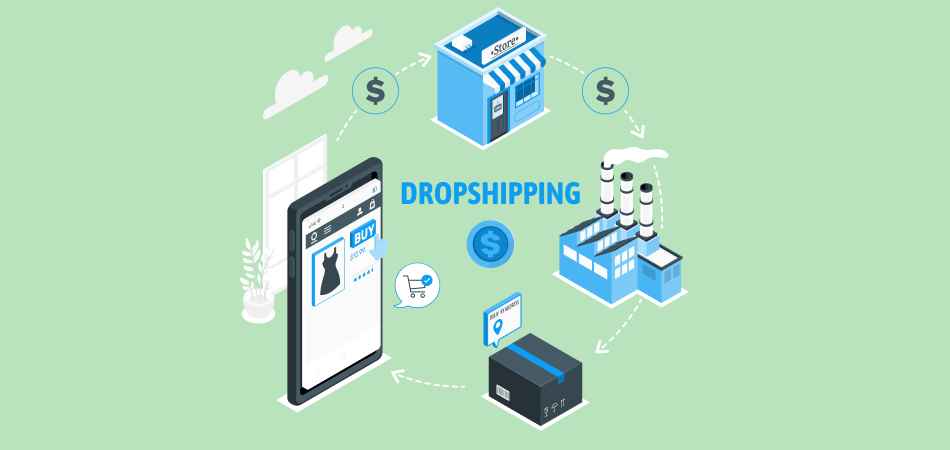What Is Warehouse Automation – Definition, Benefits & Types

Managing warehouses is a complex task for e-commerce, involving implementing new technologies, managing employees and inventory, adopting emerging trends in omnichannel retail, and handling complex global supply chains while striving to meet today's convenient delivery expectations. Ultimately, warehouse management needs to address these and other challenges in the most effective and cost-effective manner.
Some of these challenges can be addressed through certain processes in the daily operation of automated warehouses. In this guide, gain a detailed understanding of warehouse automation, common challenges that affect warehouse operations, and the benefits of introducing more robots and automated processes in your facility.
What Is Warehouse Automation
Warehouse automation is the process of applying specialized storage, equipment, and retrieval systems to eliminate or minimize labor-intensive processes that require repetitive physical tasks, manual data input, analysis, etc.
Automated warehouses using various types of automation technologies can become crucial supply chain solutions, making work easier to complete, conceptualize, manage, and evolve. The best definition of warehouse automation is equally simple. Warehouse automation is a method of moving inventory into and within the warehouse with minimal human intervention. It is the result of the automation of target processes in the fields of data collection, inventory control, and overall warehouse management systems (WMS).
| Get Started Now to Grow Your Online Business with the Best AliExpress Dropshipping Tool - DSers! |
Warehouse automation means that the burden of your most manual, repetitive, cumbersome, and potentially error-prone tasks may fall on increasingly precise and fatigue resistant machines. This means that human contact can occur in the most prominent and valuable areas. Once implemented correctly, as cascading efficiency is discovered among different elements of the bottom line, overhead will inevitably decrease. Considering the current tense labor market and the continuous increase in labor and fulfillment costs, this is truly necessary.
The end point will be an automated warehouse that maximizes the utilization of warehouse space and activities occurring there, ultimately driving safer and more accurate warehouse processes while improving employee engagement and customer satisfaction.
How Warehouse Automation Operates
Warehouse automation can improve production efficiency and employee satisfaction by reducing employee labor. Although warehouse automation can reduce departmental labor costs, it cannot eliminate the demand for human employees.
Companies that adopt these practices may not reduce the number of employees in their departments and factories at all. On the contrary, companies can reassign employees from labor positions to maintenance work, where they are responsible for repairing equipment, inspecting products for defects, testing quality and profit, and supervising production workshops.
Types of Warehouse Automation
Some types of warehouse automation include:
Goods to Person Technology
Goods to Person (GTP) technology involves machines or robots that transport materials to employees for assembly, packaging, and transportation. GTP solutions can use cranes, vehicles, or drones to transport materials or complete packages from one warehouse location to another.
The GTP solution also includes any automated storage or retrieval system, such as conveyor belts and production lines. Automated storage and retrieval systems can use conveyor belts to move items throughout the warehouse or store them in designated storage units.
Pick-to-light Systems
The light picking system uses barcodes and LED lights to help employees find order items or product materials. By replacing traditional labeling and storage systems, these systems help automate employee work and improve process efficiency.
The light picking system combines a database system and generated code to create a system that can improve the efficiency of transportation and production line staff.
Voice Picking and Tasking
Voice picking and task allocation are technical solutions that allow employees to communicate with each other through headphones at any step of the production process. Speech selection is the act of identifying potential problems on a circuit, while speech tasks respond to problems to solve them.
In case of an emergency, employees can use headphones to stop the production line or adjust the machine to help prevent accidents. For example, if a member discovers a product defect, they can use voice picking and task allocation to further convey information on the production line.
Improved Sortation Systems
The classification system allows employees to classify materials and products to improve the efficiency of many aspects of the production process. By using technologies such as conveyor belts, drones, and conveyor belts to sort items into different categories, employees can more effectively improve the accuracy of sorting choices.
The sorting system transports items to return processing points, picking areas, packaging stations, or assembly lines, depending on the item.
Collaborative Mobile Robots
Collaborative mobile robots collaborate with employees to help improve the accuracy of defect and deliverable selection in production lines. They help improve productivity by analyzing defects in products and transportation content in the process workshop.
They can also guide employees through the picking process and optimize picking routes or tasks based on warehouse status and current work priorities. Collaborative mobile robots have advantages such as reliability, scalability, flexibility, and reducing employee commuting time between regions.
Drones
Drones are mechanical robots with basic hosts and saved code to assist employees in inventory management. They can scan barcodes, perform inventory checks, and alert warehouse staff when products need to be restocked or items are located in the wrong storage section. Drones can also perform limited transportation to maintain delivery from one part of the warehouse to another.
Benefits of Warehouse Automation Technology
The numerous advantages of warehouse automation enable companies to implement intelligent technology in their logistics processes. The optimization of the first stage of the supply chain enables enterprises to maximize the performance of all the next stages.
Efficient Inspection of Goods and Equipment
After the inventory arrives at the warehouse, it should be carefully checked for any damage or waste. If manual inspection is carried out, it will take a lot of time and there is a risk of errors. Although it is automated, the process is fast and error-prone.
For example, IBM utilizes machine learning to automate these processes. With IBM Watson visual recognition technology, defects can be detected on-site without the need for manual intervention.
More Economical and Faster Production
One of the benefits of automated warehouses is that, thanks to connected sensors, machine to machine communication protocols, and other technologies, warehouse managers can access real-time data at every stage of the production and transportation cycle.
Reduce Physical Labor and Human Errors
With the help of technology, many tasks are automated, so enterprises do not need to hire more employees to manage warehouses. More importantly, the implementation of technology enhances the training process, making it faster and easier. It is estimated that the intelligent glasses and voice guidance platform will reduce the time required for full staff training from 60 hours to 41 hours.
Enhance Visibility and Transparency of Inventory Processes
Large warehouses cannot operate smoothly without an intelligent warehouse management system. New products arrive at the warehouse every day and must be stored and organized. WMS can fully control the inventory from receipt to transportation.
Computer vision identifies quality issues on assembly lines. Check whether the final appearance of each project meets the standards without manual intervention. By automatically analyzing defects and damages, the risk of delivering defective products to customers is eliminated.
Improving Employee Safety
Automation greatly improves employee safety by eliminating or reducing repetitive and often harmful tasks. Autonomous mobile robots, automatic conveying systems, and palletizers undertake time-consuming and dangerous tasks, while voice and visual guided solutions help minimize human errors and guide processes in extreme work environments.
Conclusion
The rise of warehouse automation is changing the way labor is utilized in warehouses and distribution centers, as it has become a fundamental component of distribution, fulfillment, and manufacturing operations. Therefore, the human factor in the labor market has never been so valuable or necessary.
Any repetitive task can benefit from some type of automation and make workers' work easier. This is the key framework for developing warehouse automation strategies. Once you realize the transformation benefits you can see – lower costs, higher profits, higher reputation, more accurate inventory, higher operational agility, cleaner supply chain, etc. – the next step is to develop feasible strategies.













 Company
Company
 Why Choose DSers
Why Choose DSers
 Blog
Blog
 Help Center
Help Center



